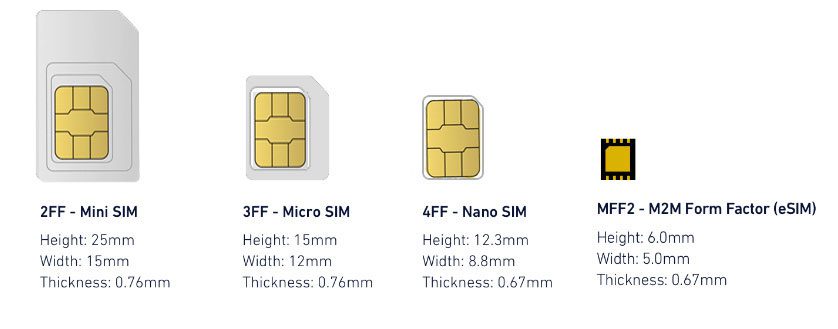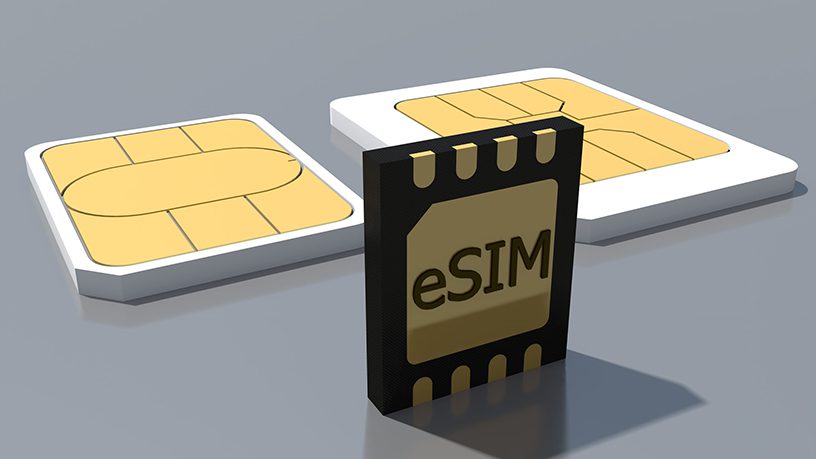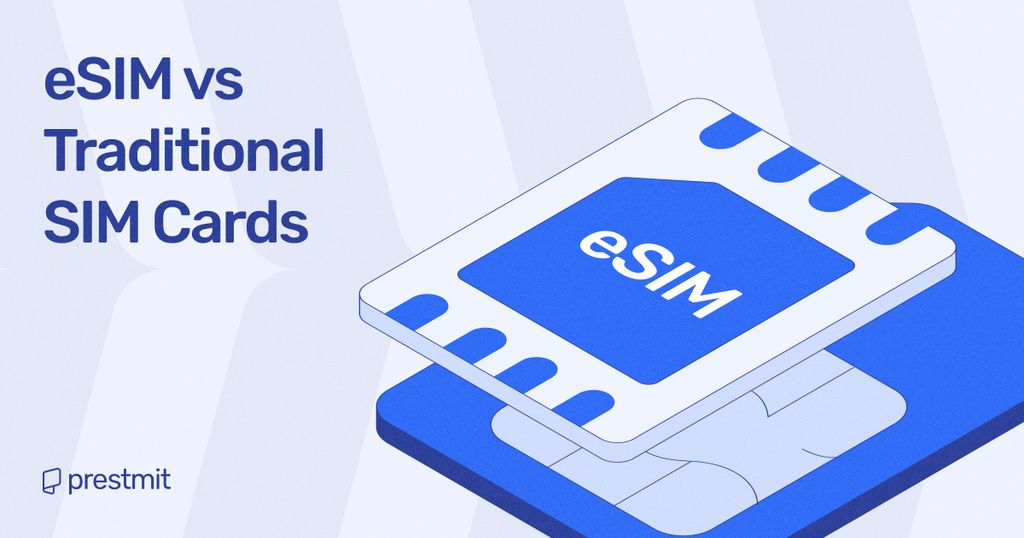Table of Contents
Have you ever gotten tired of switching between SIM cards because there is a connectivity issue with your primary SIM card or because you are traveling to another country? While you think of the best way to navigate the switch, you may need to consider this article on eSIM vs. traditional SIM cards to decide the best option for you.
Technology continues to evolve across space and time, which is why we’ve seen the creation of an embedded SIM (eSIM), a digital form of SIM that functions like the physical SIM on mobile phones. These two types of SIMs enable the connection of phones and other devices to a network. But as their form and the technology behind them differ, there is a need to settle the score on which is right for you in this eSIM vs. traditional SIM cards article.
Major Differences Between eSIM And Traditional SIM Cards

1. Activation Process
The activation of an eSIM is digital with a QR code or through your network provider’s app. This makes the process faster and does not require you to physically change your SIM card. But a physical card usually requires you to insert the SIM into your device and request your network provider to activate the line.
2. Flexibility
Mobile devices such as Android phones that support eSIM enable users to store many eSIM profiles – meaning you can switch between network providers or plans without physically removing SIM cards. This is useful for international travelers who want to use personal and work phone numbers on the same phone.
However, this flexibility is not available with traditional SIM cards as you will need to physically swap out your SIM to switch across multiple network providers on a device.
3. Availability And Network Provider Support
A growing number of network providers support eSIMs, albeit the digital SIM is not yet globally available. Traditional cards are widely available and support most mobile devices – making them more accessible.
eSIM vs. Traditional SIMs: Features

eSIM vs. Traditional SIM Cards: Phone Compatibility
Phone compatibility is crucial to the decision of choosing between an eSIM and a physical SIM card. It should be noted that eSIM technology is still in its early stage of development and adoption, so it is not all devices that support it.
The extent of eSIM support varies between network providers and regions. This is because while some providers fully support eSIMs and offer seamless online activation and management, others may not yet offer support for the technology.
Meanwhile, traditional cards offer almost global compatibility. This means that virtually every phone made in the last two decades has one or two SIM card slots – making physical SIMs a versatile, widely available and acceptable choice. People who frequently change devices find these physical SIMs useful as there are no software or carrier limitations.
In addition, these SIM cards have an immediate functionality feature as they start working as soon as they are inserted and activated, giving you quick access to phone services.
eSIM vs. Traditional SIM Cards: Cost And Availability
The initial setup cost of an eSIM varies as it is often included in the device purchase price or provided for free by carriers. Some carriers might charge an activation fee, but this is generally lower than the cost of purchasing a physical SIM card. On the other hand, traditional SIM cards are usually inexpensive, often provided for a nominal fee by carriers when signing up for a new cellular plan.
However, the cost can vary depending on the carrier and region. Some carriers charge a small fee for the SIM card, especially if it is purchased separately from a mobile plan.
eSIM vs. Traditional SIM Cards: Ease Of Switching Networks
Switching across networks on eSIM is considerably easier than traditional SIM cards. This is because you do not have to physically remove eSIMs as it is with physical SIMs. So with just few taps, you can quickly and conveniently switch networks on eSIM. This prevent the risk of damage or loss of SIMs that is prevalent in traditional SIMs.
eSIM vs. Traditional SIM Cards: Security
The eSIM technology is integrated into your mobile phone, making it less vulnerable to failures and damage. The absence of holes and removable parts in the phone provides more safety for your device. eSIM also guarantees your data protection from the reach of hackers or scammers, as it is impossible for criminals to throw away your card or steal data in the case of device theft.
Conversely, traditional cards are susceptible to wear and tear, especially if you use them in phones with dual SIM capabilities or are swapped frequently. Physical SIM cards are also prone to different types of SIM card fraud, such as SIM swapping.
eSIM vs. Traditional SIM Cards: Traveling
There are expensive roaming fees when you travel abroad, and this is irrespective of whether you opt for eSIM or a physical SIM card. If your phone does not offer international plans, you may need to get an eSIM app or buy a local SIM card to stay connected.
The only limitation can come from your device, as some of the newest smartphones no longer have traditional SIM card slots, just like some phones do not support eSIM technology. But there are many eSIM advantages for travelers.
Physical SIMs offer an easy and reliable solution when you travel to remote and less technologically advanced locations. However, their plans may be expensive, and you can’t access your phone number while using a local SIM card (except if your phone supports dual SIM cards).
eSIM vs. Traditional SIM Cards: Signal Strength
There is no clear-cut difference between an eSIM and a physical SIM card when it comes to signal strength. This is because they rely on the same network technology while being affected by factors such as your device, network provider’s infrastructure, and location.
Therefore, your choice between an eSIM and a traditional card is a function of other elements like flexibility, convenience, and device compatibility. As such, signal strength does not depend on your SIM type.
Frequently Asked Questions (FAQs) About eSIM vs. Traditional SIM Cards
Which One Is Better Between eSIM And Traditional?
The idea of a better SIM between physical SIM cards vs. eSIM hinges on the device you use, as well as your network provider. While the two SIMs have almost the same signal strength, traditional SIMs are more compatible with phones than eSIMs because the latter is a new technology.
Which Is Safer Between eSIM And Traditional Card?
You can not lose an eSIM to theft or misplacement. However, traditional SIMs can be lost, and they are prone to different forms of hacking. For instance, there is a SIM swap that can target unsuspecting crypto users or bank customers to steal their funds. This is a novel form of scam among other crypto scams.
Does eSIM Drain The Battery?
An eSIM does not consume more battery power than a physical SIM. But your battery may drain faster if you use your phone with two lines, as your phone must maintain a connection to two networks.
Conclusion
An eSIM technology and traditional cards are essential to the connection of your phones to one or more network providers. They enable you to access unlimited services on your device anytime and anywhere. However, the best SIM for you in an eSIM vs. traditional card discourse is a function of your device and the compatibility with your network provider.
Last updated on December 8, 2024

